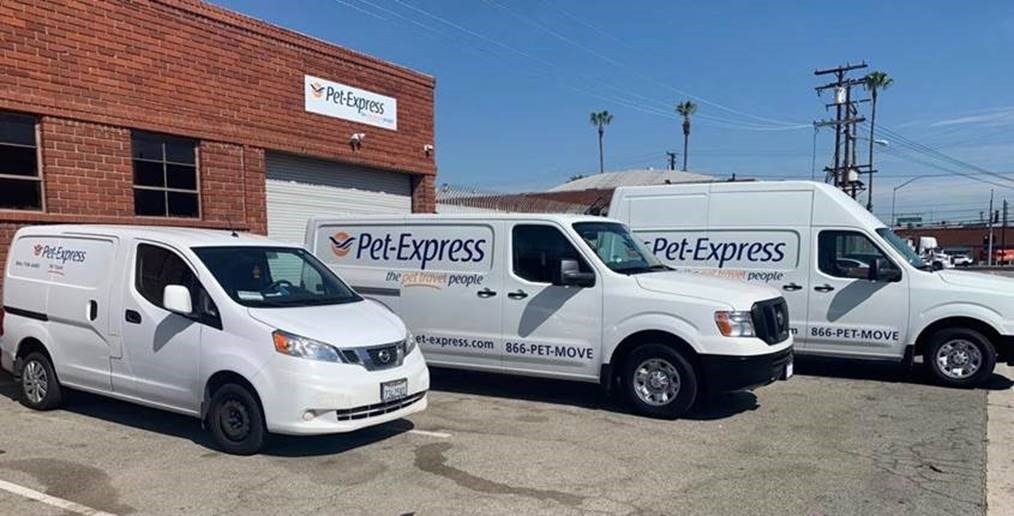Moving to a new country is an exciting adventure, filled with the promise of new experiences, whether you’re dreaming of exploring ancient ruins in Rome or enjoying the vibrant culture of Tokyo. However, the excitement can quickly become overwhelming when you realize you need to bring your beloved cat along for the journey. International pet travel involves a maze of regulations, logistics, and, importantly, costs. Understanding these costs is crucial for a smooth and stress-free relocation for both you and your feline companion.
Flying a cat internationally isn’t as simple as booking a flight and showing up at the airport. It involves a series of expenses that can vary significantly depending on your origin, destination, and your cat’s specific needs. This guide breaks down the typical costs associated with international cat flights, providing you with a clearer picture of what to expect financially. While every journey is unique, and prices are subject to change, this overview will equip you with the knowledge to budget effectively and navigate the complexities of international pet relocation.
For a tailored travel plan and precise quotation for your cat’s international journey, we recommend reaching out to our dedicated pet travel consultants. They can provide expert guidance specific to your needs.
Key Cost Factors for Flying Your Cat Internationally
Several factors contribute to the overall cost of flying a cat internationally. These can be broadly categorized into:
- Travel Crates: Airline-approved and IATA-compliant crates are mandatory for safe pet transport.
- Transportation Costs: This includes international flight fees and any necessary domestic transportation.
- Boarding and Comfort Stop Fees: Overnight stays or layover comfort breaks can add to the expenses.
- Veterinary Expenses: Health checks, vaccinations, and required documentation are essential.
- Government Expenses: Import permits, quarantine fees, and USDA endorsements are often mandatory.
Let’s delve into each of these cost categories in detail.
Travel Crates: Ensuring Your Cat’s Comfort and Safety
A sturdy, airline-approved travel crate is the first essential purchase for flying your cat internationally. This crate is more than just a carrier; it’s your cat’s personal space during travel, ensuring their safety and comfort. Airlines have strict regulations regarding crate size and construction to guarantee animal welfare during flights. Many commercially available pet carriers may not meet these stringent standards.
To determine the correct crate size for your cat, you can utilize a Crate Calculator. The general rule is that your cat should be able to stand, turn around, and lie down comfortably inside the crate without their ears touching the top.
It is always advisable to consult with pet travel experts before purchasing a crate. Using a non-compliant crate, even if it seems appropriately sized, can lead to your cat being denied boarding at the airport.
Pet Express Travel Crates: Airline-Approved and Ready for Travel
Pet Express offers a range of travel crates that are fully compliant with airline and IATA regulations. Purchasing a crate well in advance of your travel date is beneficial, allowing your cat to acclimatize to the crate, reducing stress on travel day. This familiarization period can significantly improve your cat’s comfort and reduce anxiety associated with the journey.
For budget-conscious pet owners, Pet Express also offers a selection of second-hand crates at discounted prices, subject to availability and size suitability for your cat.
Example Cost:
A standard N200 travel crate, suitable for a small cat, typically costs around $120 USD.
Transportation: Flights and Ground Travel
Transportation costs constitute a significant portion of the overall expense when flying a cat internationally. This encompasses both international and potentially domestic flights, as well as ground transportation if needed.
International Flights: A Major Cost Component
International airlines impose fees for transporting live animals due to the specialized handling and care required. These fees can sometimes be as high, or even higher, than passenger tickets. The cost of the international flight is largely influenced by the size of your cat’s travel crate. Larger crates incur higher fees. Destination also plays a role, with routes to less common destinations potentially being more expensive due to fewer flight options.
Crucially, many airlines require pet owners to book pet travel through an IPATA-certified Pet Transport Company. This is because international pet travel involves complex paperwork and veterinary procedures. Even minor errors can lead to significant delays and added costs. Pet transport companies possess the expertise to navigate these complexities, ensuring a smoother process.
Example Cost:
A direct international flight from Los Angeles (LA) to Melbourne, Australia, can range from $1,200 to $1,600 USD, depending on the size of the crate.
Domestic Transportation: Reaching the International Departure Point
 PX Branded Vans
PX Branded Vans
Depending on your location within the US, you might need to arrange domestic transportation to reach the international departure airport. This could involve a domestic flight or ground transport. For certain breeds, particularly snub-nosed breeds, ground transportation might be the only viable option. Ground transport requires a temperature-controlled vehicle with ample space to safely secure the travel crate.
Airline embargoes on domestic pet flights during peak summer and winter months due to extreme temperatures are also a factor to consider. During summer, flights may be restricted to early morning or late evening to avoid heat exposure.
Example Cost:
Domestic flights within the US for a small cat traveling in cargo typically range from $300 to $600 USD.
Boarding & Comfort Stop Fees: Ensuring Your Cat’s Well-being During Travel
Sometimes, your travel schedule and your cat’s flight arrangements might not perfectly align. This can necessitate overnight boarding at a pet transit lounge or comfort stops during layovers.
Comfort stops are especially important during long layovers. They provide your cat with an opportunity to leave their crate, stretch, relieve themselves, and receive attention before continuing their journey. Comfort stops can be arranged through the airline or via local pet shippers.
Complimentary Boarding at Pet Express:
When you book your cat’s international travel through Pet Express, a complimentary night of boarding is included the evening before their international flight. Pet Express operates pet transit lounges in both Los Angeles and San Francisco, providing a safe and comfortable pre-flight stay. They also offer daily pet updates and photos, keeping you connected with your furry friend while they are in their care.
Pet Express Pet Transit Lounges offer comfortable and secure pre-flight boarding for pets.
Example Cost:
Airlines can charge up to $500 USD for comfort stops, depending on the duration of the layover and services provided.
Veterinary Visits: Meeting International Health Requirements
Veterinary visits are a mandatory part of preparing your cat for international travel. Destination countries have specific import requirements to prevent the spread of diseases. These requirements typically include rabies vaccinations, blood tests, health certificates, and general health check-ups. For international travel, the veterinarian must be USDA-accredited, signifying government approval to issue international health certificates.
Timing is critical for veterinary procedures related to international pet travel. Each country has its own specific timeframe requirements for vaccinations and health checks relative to the departure date. This is often the most complex aspect of organizing pet travel, requiring a thorough understanding of both veterinary protocols and international import regulations.
Pet Express simplifies this process by providing a customized veterinary schedule tailored to your cat’s destination. This schedule outlines the necessary treatments and their specific deadlines. They also liaise with your veterinarian to ensure all procedures and paperwork are compliant, preventing any last-minute issues that could delay your cat’s travel.
Example Cost: Veterinary costs can vary significantly based on your veterinarian’s fees. A general health examination for your cat can range from $70 to $250 USD.
Government Expenses: Permits, Quarantine, and Endorsements
Government-related expenses are another crucial cost component and include import permits, quarantine fees (if applicable), and USDA endorsements.
Import Permits: Permission to Enter
Certain countries require an import permit to be obtained before your cat arrives. These permits can involve application fees, and the application process is often online.
Example Cost:
For example, Australia requires an import permit from the Department of Agriculture and Water Resources. The application fee is approximately $480 USD for the first pet and $240 USD for each additional pet.
Quarantine: A Mandatory Stay in Some Countries
Countries like Australia and Malaysia mandate quarantine periods for arriving pets. Quarantine duration varies by country and is a biosecurity measure. Quarantine facilities must be booked in advance and can be a substantial expense.
Example Cost:
Australia requires a minimum 10-day quarantine stay at the Melbourne Quarantine facility. Fees are detailed on the Department of Agriculture website and can be approximately $2,000 USD per cat. Additional costs may arise for veterinary treatments or extended stays.
USDA Endorsements: Validating Health Certificates
Before departing the US, certain health documents must be endorsed by the USDA (United States Department of Agriculture). This endorsement validates the health certificate for international travel. You’ll need to schedule an appointment and either visit a USDA office or mail in the paperwork.
Example Cost:
USDA endorsement fees are detailed on their website and range from $38 to $173 USD. This fee excludes appointment costs, filing, or mailing expenses. USDA endorsements often need to be completed very close to the flight date, potentially incurring priority mailing fees to ensure timely delivery of paperwork to the departure airport.
Clearing Customs: Arrival Procedures
Upon arrival in the destination country, your cat will need to clear customs, similar to passenger procedures at international airports. Customs clearance can involve various charges, including broker fees, taxes, and tariffs. Many countries also conduct a veterinary examination upon arrival.
Example Cost:
For example, upon arrival in the UK, expect a minimum entry fee of £450, including ARC and VAT fees for entry into England.
Important Note: The costs mentioned are estimates and subject to change. Government fees and airline charges are frequently updated. Always consult official government websites for the most up-to-date information and regulations for your specific destination country.
Pet Shipping Company vs. DIY: Expert Assistance or Solo Journey?
While it might be tempting to manage your cat’s international flight arrangements yourself to potentially save costs, engaging an IPATA-certified Pet Shipping company offers significant advantages and can often prevent costly errors in the long run. In some cases, using a pet shipping company is not just recommended but required by airlines and even veterinary practices for international pet travel bookings.
Attempting to navigate the complexities of international pet travel independently requires extensive research into government import regulations, airline policies, and veterinary requirements. The risk of errors in paperwork or procedures is high, potentially leading to flight delays, quarantine issues, and additional expenses.
Customer Testimonials: The Value of Expert Pet Travel Assistance
 Bucky and Lucca before their trip to Australia
Bucky and Lucca before their trip to Australia
Here’s what some Pet Express customers have shared about their experiences:
“We had an inexperienced vet, if not for Pet-express’s help our dogs would be at risk of denied entry. A situation like this really highlighted the importance of having a responsible relocation agent at your back.” – Bucky & Lucca
“I called multiple pet transport agents and Pet Express was the only one that had a person answer the phone and someone get back to me with answers to any questions I had. Highly, highly recommend!” – Minerva
“Pet Express went above and beyond to help us. The crate we provided was the wrong size, but this company worked around the clock to get our dog a different crate and a different flight. Only company I would want to use in the future.”
“They’ve been great at dealing with local partners at each stop as well as coordinating any vet paperwork involving overlapping international laws.” – Scrubs
Read more customer stories here.
Pet Travel FAQs: Quick Answers to Common Questions
Find answers to frequently asked questions about traveling with pets here.
Need a Personalized Quote?
For a customized travel itinerary and a detailed cost quote for flying your cat internationally, contact our expert Pet Travel Consultants today.